Sectoral Resection With Flap Plastic for Breast Cancer treatment in the Best Hospitals in the World
Treatment prices are regulated by national law of the corresponding countries, but can also include additional hospital coefficients. In order to receive the individual cost calculation, please send us the request and medical records.
Breast Cancer Treatment
- Diagnostics
- Reconstruction with an expander or allo prosthesis
- Diep-flap plastic reconstruction with own tissues
- Reconstruction with own tissue or implant after radical mastectomy
- Radical mastectomy
- Brachytherapy
- Chemotherapy
- Lumpectomy and lymphadenectomy by metastases to lymph nodes
- Radiotherapy
- Proton Therapy
- Embolization or chemoembolization
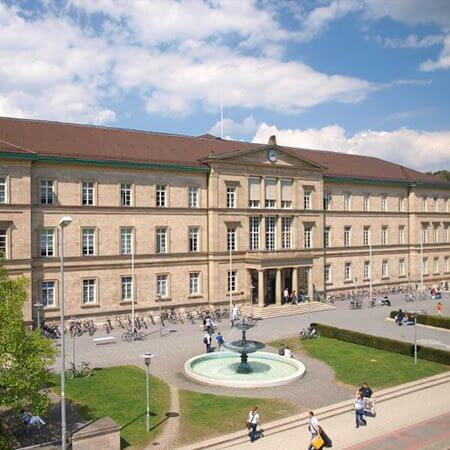
Department of Adult and Pediatric Gynecology, Mammology, Obstetrics
According to the Focus magazine, the Department of Adult and Pediatric Gynecology, Mammology, Obstetrics is included in the ranking of the top German departments specializing in obstetrics and breast cancer treatment! The department offers the full range of diagnostics and treatment of diseases of the female reproductive system, breast pathologies. Also, the specialists of the department provide a comprehensive management of pregnancy, childbirth and postpartum care for both mother and child. Key attention is paid to the treatment of female genital cancers, as well as breast cancer treatment. For this purpose, the department has all the modern therapeutic techniques, as well as its our own innovative developments by the department doctors.
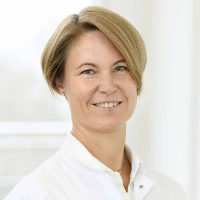
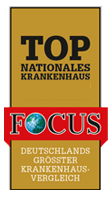




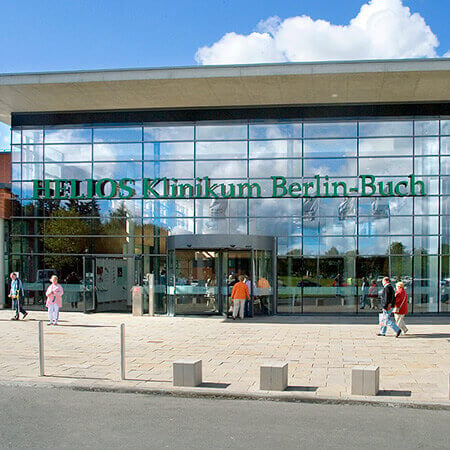
Department of Gynecology, Mammology and Obstetrics
The Department of Gynecology, Mammology and Obstetrics offers the full service range in these fields. The department specializes in the treatment of benign and malignant diseases of the female reproductive organs, breast, as well as comprehensive pregnancy management, childbirth and postpartum care. A treatment regimen is developed for each patient individually. Most surgical interventions can be performed using sparing surgical techniques. The department is certified by the German Cancer Society as the Center for Gynecologic Oncology, which indicates strict adherence to national treatment protocols and high quality of treatment.


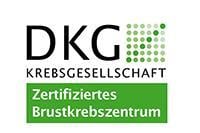



Department of Adult and Pediatric Gynecology, Mammology, Obstetrics
The Department of Adult and Pediatric Gynecology, Mammology, Obstetrics offers high-precision diagnostics and effective treatment of the full range of diseases of the female reproductive system and breast pathologies. The medical facility also employs a competent team of obstetricians, whose responsibilities include comprehensive management of pregnancy, childbirth, and postnatal care for mother and baby. More than 3,000 babies are born in the department's delivery rooms annually. The department cooperates closely with the UniFee Reproductive Medicine Center, which allows gynecologists to treat female infertility together with reproductive medicine specialists. The department's gynecologists focus on women with reproductive system cancers. The medical facility is certified by the German Cancer Society (DKG) as a specialized center. The specialists also successfully treat endometriosis, one of the most common benign gynecologic diseases. In the field of mammology, priority is given to the provision of medical care to women with breast cancer. Doctors perform comprehensive diagnostics, surgical and conservative treatment, and reconstructive plastic surgery after mastectomy. The department's specialists use state-of-the-art technical resources and their professional skills to provide each patient with high-quality medical service.






In the developed countries, sectoral resection is the main treatment option for breast cancer. It is usually followed by breast reconstruction that allows a woman to restore her physical attractiveness. There are many types of breast reconstruction. The approach to breast reconstruction is individualized based on the stage of breast cancer, the size of the primary tumor, the type of the performed surgery, and the need for the subsequent radiation therapy.
What is sectoral breast resection
Sectoral resection is the breast conserving surgery that is performed in women with breast cancer. During the operation, the doctor removes not the whole mammary gland, but only a part of it that is affected by the malignant process. The removed sector can have different sizes, i.e. 1/8, 1/6 or 1/4 of the total breast volume. If a quarter of the breast is removed, this intervention is called a quadrantectomy.
The risk of breast cancer recurrence after a sectoral resection is comparable to the risk of breast cancer recurrence after a mastectomy. Therefore, organ-preserving surgery has become the main method of treating breast cancer in developed countries. The treatment scheme includes not only the removal of the tumor, but also the radiation therapy, as well as a sentinel lymph node biopsy or lymph node dissection (removal of 10 or more axillary lymph nodes).
What is breast reconstruction
Breast reconstruction includes restoring the size and shape of the breast. After removal of the tumor, the mammary gland may shrink and change its shape. These changes negatively affect the woman's appearance and psychological state.
In order to return to an active social life, to feel comfortable and confident, most women prefer to have breast reconstruction after the sectoral resection.
This surgery is not obligatory. The goals of breast reconstruction are no more than aesthetic. Surgery does not affect survival and the risk of breast cancer recurrence.
Widespread methods of breast reconstruction
There are dozens of breast reconstruction methods. Nevertheless, some of them are used more often than others. The most common methods of flap plastic are listed below.
The latissimus dorsi myocutaneous flap (LDM flap) usage is a reliable and low-traumatic method of breast reconstruction. The problem consists in the lack of tissues in the donor area. You can get a flap of no more than 300 ml from the broadest muscle of the back. Therefore, breast reconstruction is sometimes combined with implants.
The LDM flap allows restoring the lower quadrants of the breast, ensuring their natural ptosis. Often, surgeons transfer the LDM flap to the central breast area where the nipple-areola complex is located. In breast reconstruction after breast conserving surgery, this type of flap plastic is used even without a combination with silicone implants.
The main disadvantage of the LDM flap usage is formation of a scar on the back (in the donor area). Seroma often appears, which is an accumulation of fluid inside the tissues. Its presence slows down healing of a surgical wound.
In the best hospitals in the world, surgeons use the endoscopic method of harvesting a flap from the donor area. In addition, in recent years, muscle-preserving perforating flaps have been used in some surgical departments.
TRAM-flap (Transverse Rectus Abdominal Muscle) surgery involves obtaining material for flap plastics from the anterior abdominal wall. The method allows performing tissue transplantation in any volume. In most women, the subcutaneous fat on the abdomen is developed sufficiently so that the surgeon does not need to worry about a possible shortage of donor material.
If blood supply is sufficient, the flap does not atrophy. In addition, as a woman's weight changes, her breasts increase or decrease in proportion to her body mass. When using a TRAM-flap, an aesthetic, inconspicuous scar is formed in the donor area.
The experience of a surgeon, who performs the flap plastic, is important. If an error in the marking occurs, when one inadequately supplying the muscular-vascular pedicle is selected, partial necrosis (death) of the flap is possible with a loss of up to 50% of its volume. This complication worsens the results of surgery and requires repeated flap plasty.
The best clinics in the world use the microsurgical technique for transferring free TRAM-flaps. The microsurgical technique ensures a good blood supply. In addition, surgeons abroad use flaps that do not increase the risk of hernia development against the background of the anterior abdominal wall weakening.
Many other flaps are used for reconstructive surgery after breast cancer removal. These are DIEP-flap (Deep Inferior Epigastric Artery Perforator flap), s-GAP- and i-GAP-flaps (from the buttocks), LTP-flap (lateral thigh perforator flap), etc. Since there are many methods of breast reconstruction, the doctor has the opportunity to choose the one that will lead to the best result, taking into account all medical factors.
How a doctor chooses a breast reconstruction method
The doctor chooses the optimal breast reconstruction technique based on the following factors.
Oncological diagnosis: the stage of breast cancer, the size of the primary tumor and its location, the volume of sectoral resection performed, the need for the subsequent radiation therapy.
State of the tissues in the area of the upcoming breast reconstruction: the location and size of the scars, tissue density, the presence of post-radiation fibrosis, the size of the breast.
Patient's wishes: whether a woman wants to undergo breast reconstruction at the same time or some time after removal of the tumor, whether a woman wants to tighten the mammary glands, enlarge them or reduce them.
Additional factors: what methods of breast reconstruction are available in the hospital, the hospital’s material and technical resources including the availability of microsurgical equipment, the woman's health state, the state of the donor area, etc.
Influence of radiation therapy for breast cancer on the results of reconstruction
Radiation therapy is always performed for breast cancer treatment after breast conserving surgery. The radiation therapy affects the entire breast and the tumor bed. Sometimes it is also directed at the area of the lymph nodes and the lymph drainage tract.
Radiation therapy increases the clinical efficacy of breast cancer treatment, but impairs the aesthetic results of reconstructive surgery. It causes skin pigmentation, thickening of the mammary gland, and after implantation of breast endoprostheses, increases the degree of capsular contracture (formation of a dense capsule near the implant).
Plastic surgery of the breast with the woman's own tissues can be performed immediately after the sectoral resection. This surgery does not influence the results of breast cancer treatment. With the subsequent irradiation, the aesthetic results of the plasty do not deteriorate as much as in the case of using implants.
However, some women may experience breast deformity after radiation therapy for breast cancer. Such cases often require repeated surgery.
Why is it better to treat breast cancer abroad?
Many patients choose to undergo breast cancer treatment abroad. In the best hospitals in the world, surgery is effective and safe, good clinical and aesthetic results are achieved, modern medicines and the latest radiation methods are used.
Breast cancer is no longer a fatal disease for most women. Abroad, pathology is cured successfully in many patients. Doctors use plastic surgery to restore a woman's attractive appearance after breast cancer therapy.
Advantages of breast cancer treatment abroad include the following:
- Well-equipped hospitals. Microsurgical techniques and endoscopic equipment are used during breast cancer removal and breast reconstruction operations. The latest advances in plastic surgery are used for high-quality breast reconstruction.
- Better aesthetic results. Foreign doctors can not only cure breast cancer, but also restore the shape of the breast, increase or decrease its size, and perform a lift. If necessary, the nipple-areola complex is restored as well.
- Minimal complications. The use of new methods of plastic and reconstructive surgery makes breast reconstruction less invasive, more sparing and safer. In foreign hospitals, such complications as flap rejection, purulent processes, bleeding, etc. are very rare.
- Treatment after a surgery. The best foreign specialists achieve excellent clinical results in the treatment of breast cancer. They use the latest methods of radiation therapy that are very precise and safe. If indicated, systemic medicines are used (chemotherapy, hormonal therapy, targeted therapy).
- Cost of treatment. In some countries with the developed medicine, such as Germany or Israel, prices are higher, but the level of care is very high. Many patients choose to travel to Turkey, India or Thailand. There are many good hospitals in these countries and the cost of treatment of breast cancer is much lower there.
Breast cancer treatment abroad with Booking Health
If you want to undergo breast cancer treatment at one of the best hospitals in the world, you may use assistance of Booking Health. On the Booking Health portal you can find information about leading healthcare facilities, methods of treating breast cancer and flap plastics, doctors and prices. In addition, you can compare the cost of treatment in different hospitals and book a medical program at the best price.
The medical tourism company Booking Health will organize a trip abroad for breast cancer treatment. Services and benefits of Booking Health include:
- Choosing a hospital for breast cancer surgery that performs breast reconstruction with the best aesthetic results
- Reducing the waiting time for breast cancer treatment start and making an appointment in the clinic at a convenient for you date
- Reducing the cost of treatment of breast cancer; prices for surgery are relatively low due to the exclusion of the additional coefficients for foreign patients
- Reliable information about your expenses, the cost of treatment and individual medical procedures, funds remaining in the account
- Elaboration of a medical program without repeating previous examinations
- Communication with the hospital after the completion of sectoral resection and breast reconstruction
- Buying and shipping drugs and other medical products
- Organization of additional diagnostics or treatment in foreign hospitals
Booking Health specialists provide quality organizational and medical services. We will book a hotel and air tickets for you, organize a transfer from the airport to the hospital and back.

